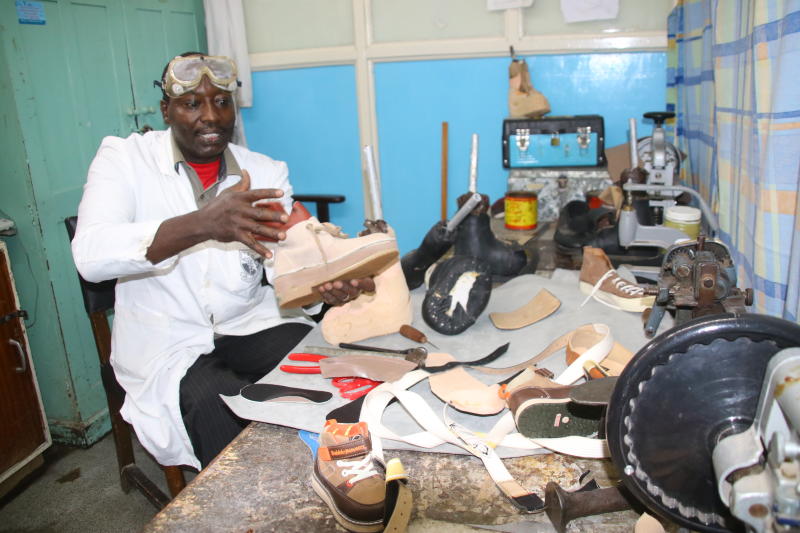 By
James Wanzala
By
James Wanzala

Orthopedic Technician Leather section Paul Kibyegon Kiptanui making shoes for short leg syndrome at the orthopedic department workshop in Kenyatta National Hospital ( KNH) during an interview on artificial limbs and correction of clubfoot with prosthetics and orthotics on 6th November 2020. [David Gichuru, Standard]
Kenya Bureau of Standards (Kebs) has adopted nine new footwear, hides and skins standards to boost local leather products access the regional market. Kebs Managing Director Bernard Njiraini said the
new standards will leverage trade in footwear and leather products produced within the East African Community (EAC) by use of comparable standards."The standards will ensure the quality, fitness for use and safety of the footwear products to the users,” said Njiraini. The standards that cover the most utilised footwear category of open and closed shoes for children aged two to six outline crucial requirements such as bonding strength, which has been an issue with children's school shoes.
Others are upper and bottom material requirements for leather and shoe soles. The standards have defined limits of heavy metals, especially for shoes of young children and infants to protect them from exposure to harmful chemicals.
Kebs has also approved codes of practice for preservation of raw hides and skins. Key preservation methods outlined include the use of salt to dehydrate the rawhide or skin, air drying or suspension methods and use of approved chemicals in pickling.




No comments :
Post a Comment